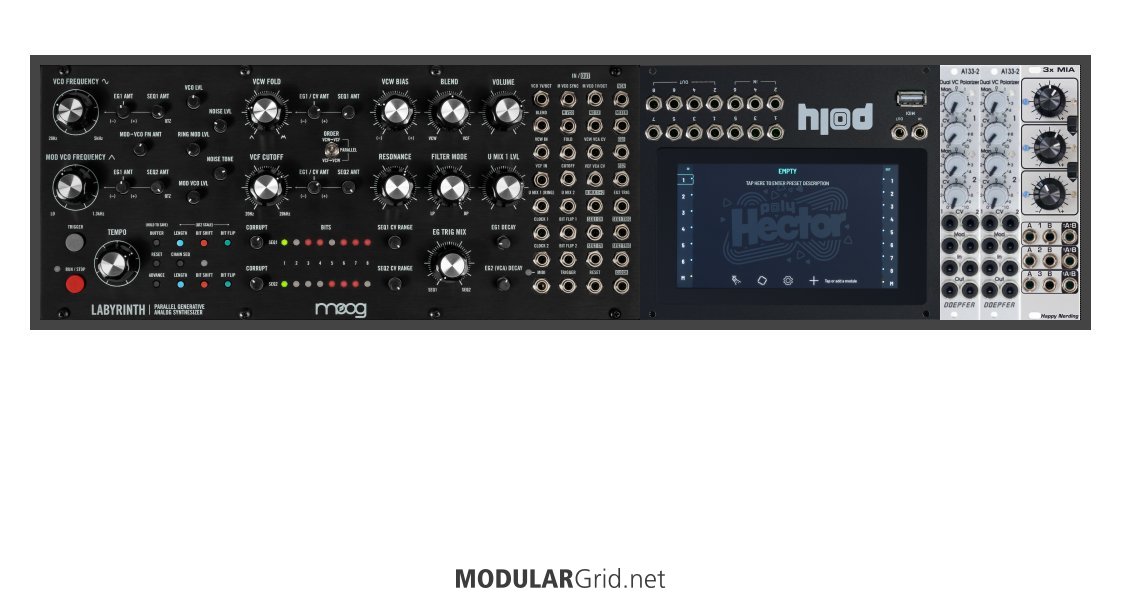I wouldn't recommend more voices. 3 in a system like this is plenty, and havimg enough modulation to move them around is arguably much more important in this format for getting full and complex arrangements. If anything, this is a good reason to keep Maths anyway: if you set one or both sides to cycle and turn the rise and fall way down, they will go at audio rate and function as oscillators. You can have then function normally by using the Both input as your pitch input. You can also have some weird, pitch affected waveshaping by putting the pitch information into just the Rise or Fall input.
All the modulation you can fit in this case is good, and Maths is a versatile module that can cover a lot of ground. Pam's is a good inclusion, too, but the clocked nature of it means you'll want another more free-running, hands-on module to complement it. The logic and mixing elements will also help for making interesting hybrids of these elements. There are other options for complex modulation modules that potentially take up less space (Xaoc Zadar, Intellijel Quadrax, Mutable Peaks, Vostok Fuji), so this is also an option, but Maths can do a bunch of things these can't (like be an oscillator or envelope follower) and is probably more fun in this context.
There are two MIDI input modules here. mmMidi does not do MIDI out. Just MIDI in. You'll need something that explicitly does CV to MIDI conversion. Alternately, you can just use Pam's with its MIDI expander that has a MIDI out, but that will limit you to what you can get out of Pam's (not that this is all that limited). Don't forget that the Arbhar has an expander that allows for polyphonic MIDI input as well. You may not need as much direct MIDI to CV conversion as you think. What else needs to be clocked via MIDI aside from Pam's?
The ALM MCF is pretty much only available in the System Coupe amd doesn't appear to be around anymore. Unless you found one ypu can buy or you already have one, you may need another filter.
Otherwise it all looks fine to me. I'm a big fan of the Aurora, especially because it also has alternate firmware for a slightly more conventional reverb based on FDN, so it can be both its beautiful weird self or a more traditional sounding reverb with modulation if you find yourself needing that in the rack but not wanting to buy a whole other reverb. The Intellijel VCA is a classic and a good call. I'm not crazy about output modules in the rack, and there are 0hp options (I have a nice one from Herzlich labs), but if you think having one in there will help, I say go for it.
If you need more space, don't be afraid to put the Mother-32 back in its own case. It seems like a good balance to me for now (you don't need much to get a Moog, a granular synth, and another oscillator to form a full arrangement), but temptation is always there and you do have some wiggle room if something comes up.

